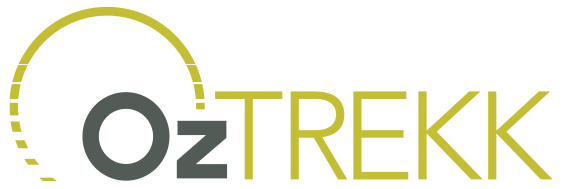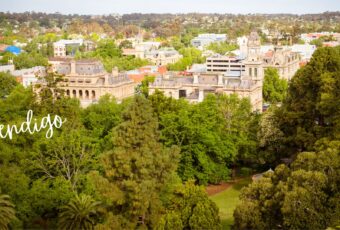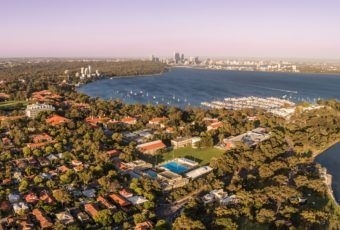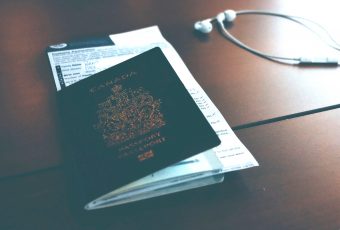Overview
Important: The information on this page is intended to provide you with the basics of the credentialing process. It is your responsibility to contact your provincial regulatory body to ensure you are familiar with the process to return. While we review this content on an annual basis, it is subject to change at any time. Please ensure you review all information provided by the regulatory bodies for the most up-to-date information. OzTREKK is not responsible for your credentialing process.
The Commission on Dental Accreditation of Canada (CDAC) recognizes Australian Dental Council (ADC) and Dental Council of New Zealand (DCNZ) accreditation for all general dentistry degrees, including postgraduate Doctor of Dental Surgery/Medicine (DDS/DMD) and undergraduate Bachelor of Dental Surgery/Science (BDS/BDSc).
This means that graduates of an Australian or New Zealand dental school are eligible to practice in Canada and can follow the same process as graduates of a Canadian dental school (outlined below), which includes passing the virtual OSCE and registering with their provincial dental regulatory authority.
Practicing in Canada
How do you become a dentist in Canada?
Pathway to Certification
1. Graduate with a general dentistry degree whose accreditation is recognized by the CDAC. All the dentistry degrees featured by OzTREKK are accredited with the CDAC.
2. Complete the NDEB’s certification process:
- Apply through the NDEB portal.
- Submit proof of graduating with an accredited degree in general dentistry (your original transcript).
- Register, study for, and pass the virtual OSCE (taken a maximum of 3 times).
- Know the up-to-date fees.
Once you’ve passed the exam and have provided proof of your graduation, you will be certified and a certificate will be issued.
3. Register with your provincial dental regulatory authority (below).
Provincial Requirements
While all Canadian provinces require you to have Commission on Dental Accreditation of Canada certification in order to become licensed to practice, each province has additional licensing requirements. Check the website for your provincial regulatory body:
College of Dental Surgeons of British Columbia (CDSBC)
College of Dental Surgeons of Alberta (CDSA
College of Dental Surgeons of Saskatchewan (CDSS)
Manitoba Dental Association (MDA)
Royal College of Dental Surgeons of Ontario (RCDSO)
Ordre des dentists du Québec (ODQ)
New Brunswick Dental Society (NBDS)
Dental Council of Prince Edward Island (DCPEI)
Provincial Dental Board of Nova Scotia (PDBNS)
Newfoundland Dental Board (NLDB)
NWT Dept of Health and Social Services: professional_licensing@gov.nt.ca
Yukon Consumer Services: (consumer@gov.yk.ca with CV)
Specializations
The current reciprocal agreement among the Australian Dental Council (ADC), the Dental Council of New Zealand (DCNZ) and the Commission on Dental Accreditation of Canada (CDAC) extends to “general” dental programs only, e.g., Doctor of Dental Medicine/Surgery or Bachelor of Dental Surgery/Science.
Completing a Specialization in Canada
Those wishing to complete a post-graduate specialization in Canada after completing a general dentistry degree in Australia would typically practice for a year or two before applying to a specialization. While admissions requirements vary by school, it’s our understanding that preference is given to those with experience and a solid demonstration that they can succeed in their chosen specialty. Please contact the Canadian university at which you hope to study for details.
Completing a Specialization in Australia
After completing a specialization in Australia, gaining certification to practice in Canada depends on the specialty and the province. Visit CDAC to find a list of certification and examination agencies, as well as regulatory authorities for each province.
The National Dental Specialty Examination is administered via the Royal College of Dentists of Canada (RCDC). Anyone completing an international specialization not accredited by the CDAC may be required to complete additional programs such as a Dental Specialty Assessment and Training Program (DSATP). Those considering this route are responsible for investigating potential options and requirements.
Practicing in USA
Although Canada and Australia have a reciprocal agreement between CDAC and the ADC, this does not extend to the United States and the Commission on Dental Accreditation (CODA). While much of the application experience is the same for Americans, there are a few differences you should know about, including the accreditation processes.
To practice dentistry in the United States, whether as a domestic or international dental school graduate, you must follow the American Dental Association’s licensing process. Licensing requirements will vary by state, so it determined by the individual state dental boards.
The Joint Commission on National Dental Examinations (JCNDE) administers several standardized exams to evaluate the preparedness of individuals for the study and practice of dentistry and dental hygiene. They include the National Board Dental Examination (NBDE) Part II, the National Board Dental Hygiene Examination (NBDHE), and two new examinations which have recently launched: the Integrated National Board Dental Examination (INBDE) and the Dental Licensure Objective Structured Clinical Examination (DLOSCE), launched June 2020.
The INBDE is a written cognitive examination for dental licensure. This exam has replaced the NBDE Part I and Part II.
The Joint Commission on National Dental Examinations provides all the information on exams required by state. There are 5 regional examination agencies, depending on your preferred state, but all examinations have the same basic requirements for examinations that include an education component, written, and clinical components. To determine the requirements for the state in which you wish to practice, visit the Initial Licensure Requirements Map.
Most states require a degree from an accredited dental program by the CODA. You may be required to obtain additional qualifications from a CODA accredited program in the United States through and advance standing program through the American Dental Education Association. You can apply to this program through the Centralized Application for Advanced Placement for International Dentists.
Resources
- State Licensure for the International Dentists
- American Dental Association – Foreign-educated Dentists
FAQs
Can my partner or family come to Australia with me if I get an offer?
Many Canadians wish to fulfill their career goals after getting married, having kids, or both! We’ve had plenty of students who have taken their partner and/or children with them.
If you want to take your partner or family with you, you’ll need to add them as a secondary applicant or dependents to your student visa application. Even if you don’t plan on taking them with you, we suggest you add them to your application anyway because it can be complex, expensive, and time-consuming to add them afterwards. You’ll then need to provide additional documentation to support your claims of a relationship or your children’s dependency status.
In addition to looking after the visa, you’ll also need to ensure they’re included on your Overseas Student Health Cover (OSHC), you have appropriate accommodation, and if you’re bringing children, you’ll need to enroll them in school.
Visit our Health Insurance page for more information.
When should I apply?
We recommend you begin your OzTREKK application about a year before your program would start. Most programs in Australia start between January and March, so that means you would start your OzTREKK application between January and March the year prior.
Here’s how the typical “cycle” works if your program starts January – March:
March – May: You gather all required documents like passport photo page, transcripts, résumé, personal statement, and send them to our office. Don’t worry, we’ll tell you exactly what we need!
June – August: Interviews (if your program requires one)
September – December: Offer time! If you get an offer, we’ll walk you through the acceptance (or decline) process and give you all the help you need to get ready to go.
January – March: Time to head Down Under!
Is there a difference between the undergraduate and postgraduate dentistry options?
Australia and New Zealand offer professional dental programs at both the undergraduate- and graduate-entry levels. Undergraduate-entry or bachelor’s-level dental degrees like the Bachelor of Dental Science or Bachelor of Dental Surgery are open to applicants who have completed high school, as well as to those who have fully or partially completed an undergraduate degree.
Graduate-entry (master’s-level) dental degrees like the Doctor of Dental Surgery and Doctor of Dental Medicine are only open to applicants who have completed an undergraduate degree and have written the Canadian or American DAT. The only graduate-entry option OzTREKK features that doesn’t require the DAT is the University of Otago’s graduate-entry Bachelor of Dental Surgery.
Both the graduate-entry and undergraduate-entry dental programs will allow you to practice as a general dentist in Canada as well in Australia. The name of the program does not necessarily affect its accreditation status. The program is not required to be a “doctor” program to be accredited as it is the content and quality of the program that determines its eligibility, not simply the name.
Can I apply if I’m only 17?
Yes, but you’ll require parental or guardian consent (signature). OzTREKK will provide the necessary documentation for this signature.
If you won’t be 18 when your program starts, you’ll be required to show that you’ll be living with an approved guardian until you turn 18. If you don’t have an approved guardian in Australia, you may need a family member to apply for a guardian visa to accompany you. This guardian visa should be obtained as part of the student visa application
Where can I see what grades have been considered competitive in the past?
Please visit our Eligibility page for past competitive scores.
If I have an educational background in dentistry, will this change my admissions requirements?
No, not necessarily. If you’ve completed university degree studies in the dentistry field (e.g., Bachelor of Dental Hygiene), the admission requirements to study dentistry at an Australian or New Zealand dental school would be the same as if you were coming from a non-dentistry related field; however, depending on the level of education, this may impact an assessment. Based on the Australian Qualifications Framework, our featured universities consider diploma/college studies as a different “level” from university studies (level 5 = college studies vs level 7 = university studies). This means you won’t be assessed in the same way as an applicant with post-secondary studies would be, and therefore, your application won’t be viewed as “competitive.” We’ve had students with very strong college scores (near perfect) not receive offers because the conversion used for college studies is not particularly favorable.
Additionally, if you were coming from a partially or fully completed Bachelor of Dental Science/Doctor of Dental Medicine elsewhere, the Australian universities may question why a student would then be seeking to enter an equivalent program in Australia.
Will taking a year off from my studies look bad on my dental school application?
No, not necessarily. Some of the universities have told us that they do not want to see a gap year (it may make the application less competitive); however, this doesn’t prevent them from considering your application. In these instances, we often ask for a résumé so that we can provide the university with information about the time in question. For instance, did you volunteer, work, take additional studies, etc.? You won’t be penalized by taking a year off.
When should I start my dental school application?
We encourage all dental school applicants to begin the process by filling out the OzTREKK application in January – February. Afterward you’ve pressed “Submit,” we’ll send you an email outlining the documents required by the universities to complete your application (e.g., official transcripts, passport photo, DAT score report, etc.).
You can also start by sending us unofficial (personal) copies of your transcripts, so we can complete a pre-assessment and verify eligibility right off the bat! Beginning early sets you up for success. With OzTREKK guiding you through the process, you’ll have all your paperwork in order, and you won’t miss any deadlines!
What is a competitive GPA to get into dental school?
The competitive average for most dental school applications starts at approximately 80%, but it’s important to remember that universities use other methods of assessment including prerequisites, admissions tests, interviews, etc.
Please see OzTREKK’s Eligibility page for the most recent competitive dentistry application statistics and GPA Conversions.
How long is my DAT valid for?
Generally, DAT reports have a validity period of 2 years. For the University of Melbourne, exam results must be from within the last 4 years. Each year, the universities confirm exact validity dates, so be sure to check the program pages or chat with the Dentistry team (dentistry@oztrekk.com).
Can I apply with my high school grades even if I’m in my undergrad?
If you haven’t completed your undergraduate degree, you’ll only be eligible to apply to undergraduate dental degrees. Your current university GPA will be considered either alone or in combination with your high school average. All academic transcripts must be submitted for evaluation. Additionally, your high school courses will be assessed to ensure prerequisites are met, e.g., English requirements, math, science, etc.
Can I apply to graduate-entry dental degrees without finishing my fourth year of university?
You’re eligible to apply to graduate-entry dental degrees with a completed three-year undergraduate degree. Given the timelines, you can apply to the graduate programs in your final year of your degree program, provided the degree is completed by the university specified deadlines. If you haven’t completed your degree, you may consider applying to an undergraduate dental degree and have your university studies and GPA assessed, along with prerequisite high school subjects.
Do dental programs have rolling admissions?
No. All OzTREKK-featured dental programs have specific application deadlines. You’re encouraged to check the dentistry program pages for admissions details, as this can change from year to year.
What high school subjects should I have to get into dental school?
To get into an undergraduate-entry dental program, universities will average your top 4 – 6 Grade 12 courses along with prerequisites 12 (varies by province).
English is required by all universities. To meet prerequisite requirements for all courses, you’ll also need biology, chemistry and advanced math (typically pre-calculus or calculus or equivalent), depending on the province. Physics is recommended but not mandatory.
If you’re not sure about your prerequisites, please reach out to dentistry@oztrekk.com!
Do things like clubs and extracurriculars increase chances of acceptance?
Of all the dental schools we represent, only James Cook University will consider extracurriculars and clubs, which should be included on the Bachelor of Dental Surgery supplemental application. JCU will also accept up to 3 reference letters.
The most consideration will be placed on academics such as GPA, prerequisites, and any applicable admissions tests. There may be cases where accomplishments and experiences outside the academic sphere may be mentioned, for example in a personal statement, a supplemental form, or in interviews should a student be invited; however, we are not privy to the weight that may be given to these supplementary documents.
Where an application requests a personal statement, you may decide to include this information as part of your response.
Do I have to write an essay to get into dental school?
James Cook University is the only university that requires a supplemental form as part of its admissions requirements. It has approximately 5 questions to answer in short-essay format. JCU also allows up to 3 reference letters to be included in the application.
La Trobe University and the University of Otago require a personal statement, and Charles Sturt University requires the completion of a genuine student questionnaire.
Do Australian dental schools consider shadowing hours?
Only James Cook University will consider up to 3 reference letters and work/volunteer experience, which you can include in the supplemental application.
There are a few universities that will require additional documents such as personal statements, or that conduct interviews where students can mention these additional attributes; however, the main basis of assessment is typically academic or admissions-test based.
Can my entire application be submitted through OzTREKK?
Absolutely. We manage and submit your application(s) on your behalf and communicate any updates from the universities.
Applying to an Australian or New Zealand university starts by filling out our OzTREKK application: You’ll tell us a bit about yourself, like your name, address, date of birth, education history, and what schools you want to apply to!
When you click “Submit,” the application with all your information only comes to us, so there’s no need to worry about making a mistake at this stage. We then create a file for you (based on your name, not a number!) and email you a list of documents required to complete your application—things like passport photo page, transcripts, résumé, personal statement—but it depends on the program, as some programs require more paperwork than others.
If you get an offer, we’ll help you with that part, too! Whether you want to accept or decline, we’ll help you figure out your next steps. If you accept your offer, we’ll even help you get ready to go. We’re here to be an advocate for you, and to walk you through the entire process from start to finish.
Should you have any questions along the way, just send us an email or book a chat. That’s why we’re here!
Are there any scholarships for international students?
Scholarship options in Australia are usually limited for international students as they tend to be reserved for those undertaking postgraduate research degrees; however, we can advise you where to look and whether specific programs have a history of offering scholarships.
Occasionally, scholarships are granted to high achievers—those with very high marks. In previous years, we have seen $5000- to $10,000-scholarships given to OzTREKK students.
Check out OzTREKK’s Financing page to learn more about scholarships and paying for your degree.
Do you have course outlines on file?
Before sending us outlines, check to see if we’ve already got them. We can save you a lot of time and ensure we’re submitting good outlines on your behalf. Outlines must be within 2 years of the time you took the course (as listed on your transcript).
I received a low mark on my prerequisite course. Will this impact my application?
To meet the prerequisite subjects, you need to have been granted the credit (passed); the grade isn’t considered in the prerequisite assessment.
How does OzTREKK know if my application will be competitive?
The majority of Canadians applying to full-degree programs in Australia (i.e., not study abroad courses, which usually only last a semester or two) apply through OzTREKK. They’re studying medicine, dentistry, law, physiotherapy, occupational therapy, etc.
Since they’re using OzTREKK’s services, this gives us a good idea of the starting point of a competitive application each year, allowing us to help you determine which universities/programs are most likely to present you with a letter of offer!
You can get started on determining your chances by reviewing the admissions requirements on each program page. Then, visit our GPA Conversions and Eligibility pages for details and suggestions to help you get into the program of your dreams. Of course, OzTREKK is always here to help if you have questions.
What is a 5.0 GPA in Australia?
Unlike in Canada, GPAs in Australia are simple. They are standardized, so they mean the same thing to everyone.
In Australia, a 5.0 / 7.0 would roughly translate to a 2.7 / 4.0 or approximately 70% – 72%, but keep in mind all universities assess slightly differently.
Learn more on our GPA Conversions page where we list the most common Canadian GPA scales to their corresponding Australian GPA grade.
Is it hard to get into Australian dental schools?
If you have a bachelor’s degree and have completed the Canadian or American DAT, you may be eligible to apply to graduate dentistry degrees like the Doctor of Dental Medicine or the Doctor of Dental Surgery.
Just finishing high school or partially finished an undergraduate degree? Undergraduate dentistry degrees like the Bachelor of Dental Science and Bachelor of Dental Surgery may be options for you. Check out the admissions requirements.
Should I apply to undergraduate- or graduate-entry dental degrees?
Undergraduate-entry dental degrees are open to students straight from high school or to those with a partially or fully completed bachelor’s degree. These programs don’t require the DAT and are 5 years. A few schools require the UCAT ANZ admissions test. UWA requires the ISAT, but only those direct-from-high-school are eligible to apply.
If you have a completed undergraduate degree and have written the Canadian or American DAT, you may be eligible to apply to graduate-entry dental degrees. These programs are 4 years, and some have strict prerequisite requirements. The University of Otago dental program does not require the DAT.
Graduates of any OzTREKK-featured dental degree are eligible to become licensed to practice general dentistry in Canada.
Which prerequisites do I need?
Prerequisite courses vary by university and by program. We’ve listed university- and program-specific requirements on each program’s page under “Admissions Requirements.”
How do universities calculate GPA?
Calculations differ by university, but most use cumulative (all units within a program) or weighted GPA (typically last 2 or 3 years of study). See GPA Calculations for more information.
What are official transcripts, and how do I send them?
For a transcript to be considered “official,” it must be sent directly from your high school, college, and/or university (either via snail mail or by email). It can even come from you—as long as it arrives in the original, sealed envelope.
To assess your application, universities must see your official transcripts certified by OzTREKK—a requirement of Australian and New Zealand universities and a part of our agreement with them.
By email (preferred method): Your high school, college and/or university can email them to transcripts@oztrekk.com or they can use an official transcript service, like Parchment or MyCreds. When submitting a request for a digital transcript and a password is required, please use OZTREKK1 (all capitals, no spaces). If you have a character limit or need to set an access pin, please use 1234.
By mail (only if unable to send via email): Please order your transcripts to be sent directly to our office from all institutions where you have studied since high school, including any college studies, exchanges, transfer credits, and/or advanced placement (or IB) studies. Please note, some programs also require high school transcripts; if this is the case, your student advisor will let you know.
Send your documents via FedEx or Purolator, especially when you need your documents to arrive at our office ASAP. If you use Canada Post’s courier Xpresspost, please don’t request a signature, as this can add delays.
OzTREKK
301–1 Sherbrooke Street East
Perth, ON K7H 1A1 Canada
As soon as your transcript arrives, we’ll let you know!
What are the average marks for entry?
For undergraduate dental degrees, average marks for entry vary by university.
From high school: Best 4–6 Grade 12 courses (or equivalent) along with prerequisites, depending on the province. Minimum average GPA is 83% – 94%, with competitive average starting at 95%+.
With some university studies: Minimum cGPA is 2.7 – 3.1 with a competitive average starting at 3.7.
Click on a university for uni-specific entry requirements and visit our Eligibility page for more details.
Which dental school is best?
The Australian and New Zealand universities OzTREKK represent are ranked highly by higher education ranking systems. Each dental program is known by the quality of its education, its state-of-the-art facilities, and by its specialties e.g., rural and remote dentistry. Deciding which program to undertake is usually a personal choice but chatting with OzTREKK is usually the best place to start!


































Ask A Question
Ask us about your program of interest, or if you have a question about our services.
CONTACT US TODAY